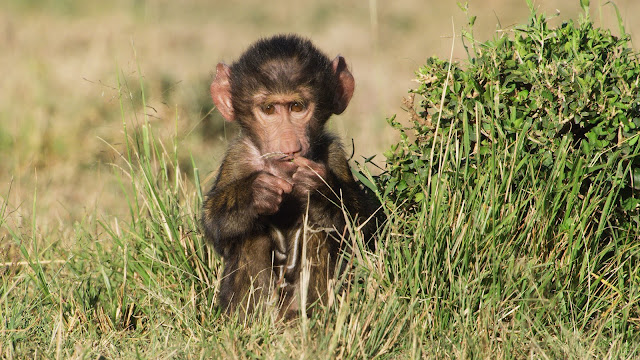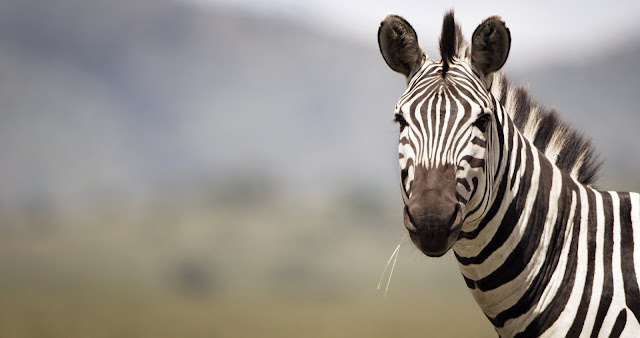by Thinus Ferreira
A dry river bed is turned into a raging torrent of water that elephants still attempt to cross, when a small elephant calf suddenly loses his footing and is swept downriver. His desperate mother goes after him and just as she reaches him, he's swept away further, and further. Can she save him?
These are other heartstopping scenes are part of the striking second season of Serengeti starting on Sunday 14 November on BBC Earth (DStv 184) at 16:10, with Lupita Nyong'o back as the narrator for 5 new episodes.
DStv subscribers meet up again with Bakari, the jilted baboon from the first season struggling with family life, while Kali - the "exiled single mom" lioness - makes a difficult decision. There are also new animal stars entering the story as a family of leopards arrive with their cubs.
Serengeti's second season marks the launch of BBC Earth's "Eco Season" of programming, which aims to provide viewers with a deeper understanding and appreciation of the world we live in.
Like the first season TVwithThinus sat down again with the Emmy-winning wildlife filmmaker John Downer who is the series director and executive producer of Serengeti who shares behind-the-scenes insights from the making of the spectacular new season.
Lupita Nyong'o says in the narration of the second season that it's "the next chapter" in the Serengeti adventure. I'm wondering, how is the second season different from the first and how does it propel the story forward?
John Downer: We continue a lot of the stories that we've started in the previous season and we're following some of the same characters.
We're following Bakari, we're following Kali but we've got a lot of new ones as well. We're sort of meshing the two. We pick up on some of the old stories and they go in directions that you would never ever expect. We're also introducing some other characters and you'll find out more about them. There are continuing surprises.
The amazing thing about Serengeti is it never tells the same story twice. We're driven by what the animals do and the animals are totally unpredictable. So the story is unpredictable and it's continually refreshing.
The scene with the baby elephant - swept away and the mother goes after it. As filmmakers you don't intervene as observers but I'm wondering as the producer and director how you feel when you witness those scenes?
John Downer: Well, there are heartbreaking things that you are moved by, as the audience is moved by. We as filmmakers can't intervene - that's the golden rule.
If you start doing that you're messing with the ecosystem, you have to let things play out and very often there's nothing you can do anyway.
But when you're filming you get so attached to these animals. It is a very emotional time as a filmmaker when witness these things. So it is upsetting.
We include those scenes into the drama because that's what drama is and that's the reality of these animals' lives but we also make sure we have the fun side and the humorous side and the other things that make the Serengeti such a special place.
There's a tendency to think that nature is all about aggression and fighting and killing and we've tried to get under the skin of these animals and show that most of the time they're just getting on with life.
They're having a lovely time and those shocking events are rare but they are part of the reality of life out there. It's tough. We try and put a balance within the storylines to make sure that you see both sides.
With the Serengeti cinematography you literally bring the viewer camera-to-eye with the animals whether it's a bird in flight or a tall giraffe's head - it means the camera is going right to their eye-level. What did the production learn from the first season to improve on filming techniques to capture these astounding scenes?
John Downer: When I made Serengeti the first time, it was the first time that I had ever felt that I had at my disposal all the kit that I needed to make that - to get into the lives of these animals and to get under their skin and to film stuff from their perspective, in their world.
What you see - but don't think about hopefully - is the techniques that go into it.
We normally have 3 crews, sometimes all together - they're filming from different angles - but they've all got the basic kits but they've also got a whole array of other filming techniques.
Very often an event is being covered on multiple cameras with multiple purpose - whether it's the remote cam viewpoints or whether it's drones or whether it's tracking vehicles with stabilising cameras.
All of that comes together to create that Serengeti experience.
You shouldn't see it when you view it because all you should be feeling is that you're right in there and that's what the aim is. What's so wonderful about Serengeti as a series is the techniques grow - they just get better.
I had what I wanted and some of the stuff I didn't know if I was ever going to get. And then you start saying "Wow, we could do this and we could do that".
Suddenly it becomes even - I wouldn't say easier - but the ambition becomes bigger to be in there with them because we have the techniques to do that. And also the experience is growing among the crews and they're thinking "oh let's do this" as they're filming. It's an evolving thing.
It's so striking to me that you film while it rains heavily and you mentioned the drone shots. I'm wondering: There's not a drop of rain on the camera lens. You don't notice it as a viewer until you stop to think about what you're seeing. Can you give away the secret to these dark arts in your magical filmmaking or is it a trade secret?
John Downer: Well, there's no real secret. We do get water on the lens and all that, we do. But we're pretty good at protecting it and we also set out, saying - normally people don't film in the rainy season. For that very reason.
So we went there knowing that we were going to have to. The raining season could be amazing because animals have to do different things. What we didn't know it is would be the biggest raining season ever - it went on and on and on. Huge floods and everything.
We were prepared for it and we had the camera techniques to do it. That doesn't mean we never get splashes on lenses, you know, we do. Ha ha. But we have ways to clean them very quickly. It's all geared towards capturing events in any weather conditions.
The animals are anthropomorphized so viewers get to related to the various animals and I'm wondering who gives them their names and how are the names chosen?
John Downer: Well, they are anthropomorphized but that's the whole point. The thing is, we're not that separate from them and I've always hated that word because it kind of takes humans out of the animal world. We are animals. We're all part of this incredible ecosystem.
We're trying to give an equality between "us" and "them".
One of the way to empathise and to get close to them is to give them names. The names are based on Swahili word because that's the language of that geographical area - spoken by humans. But it gives a certain authenticity to that place.
They're based either the names of the animals themselves like Duma is a cheetah, Tembo is an elephant - and sometimes it's about their character.
There's always a reason behind the name. You get closer to a subject if you have something to call it. Bakari becomes character because he's Bakari. If he's just a baboon it's not the same.
Serengeti shows the changing of the seasons but as I watched this new season it also alludes to, if you listen closely, to the animals' environment that is changing. I'm wondering whether this denotes mankind encroaching, I'm thinking climate change, poaching. What's maybe the subliminal message of Serengeti?
John Downer: What we set out to do is to make people empathise and care for those animals.
We take viewers into this world and relate to them that you would to humans, and you then have an equality with those animals and you have an investment in them.
When you hear about climate change it's kind of a big abstract thing. What we have in Serengeti's second season is an event that was absolutely caused by climate change which is the most rains that I have ever seen in that place and it became flooded.
The animals have to cope with climate change writ large, as they're trying to cope with their world being turned upside down by this catastrophic event that's being caused by humans that they have no awareness of.
That was quite a big turning point. It was so real and it really added to the understanding of those films are which is to make people care about these animals and see the bigger picture and where we fit in with them. That was then writ large in terms of what happened.
It's very powerful and I'm pleased that you picked up on that underlying thing - we're not banging a drum and saying "this is conservation and this is a human disaster" but it's there. It is reality what you're seeing in those events.
Serengeti season 2 is on BBC Earth (DStv 184) on Sundays at 16:10, starting on 14 November.


















